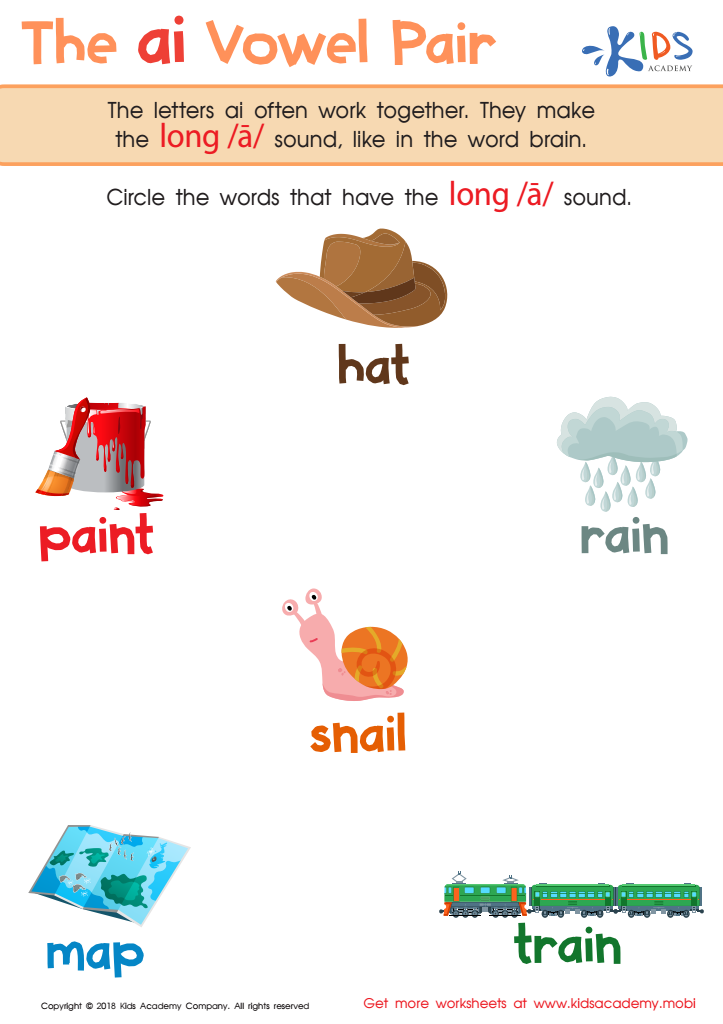Vocabulary expansion Normal Vowel Blends Worksheets for Ages 5-8
7 filtered results
-
From - To
Boost your child’s linguistic skills with our "Vocabulary Expansion Normal Vowel Blends Worksheets" for ages 5-8. Designed by educational experts, these engaging printable sheets help young learners master vowel blend sounds, enhancing their phonemic awareness and reading abilities. Our varied exercises are perfect for building a robust vocabulary, improving spelling, and fostering a love for reading. The colorful, age-appropriate activities ensure that learning remains fun and effective. Nurture your child's language development with these essential resources today – the perfect start on the path to proficient literacy. Download now and watch their skills flourish!


The AI Vowel Pair Worksheet


Reading: OW and OU Words Worksheet


Reading: AI Vowel Team Worksheet


Reading: AW and AU Words Worksheet


Reading: EA and EE Worksheet


Reading: OI and OY Worksheet


Reading: EA as in Bread Worksheet
Vocabulary expansion and normal vowel blends are crucial components of early literacy development for children ages 5-8, and parents and teachers should prioritize them for several reasons.
Firstly, a broad vocabulary is directly linked to reading comprehension. When children understand more words, they can more easily grasp the meaning of the sentences they read. This comprehension is fundamental for success in all academic subjects.
Secondly, normal vowel blends (combinations of vowels that produce a single distinct sound) are building blocks of English phonetics. Mastery of these blends helps children decode new words, enhancing their reading fluency. When children recognize and understand how vowels work together, they become more confident and proficient readers.
Furthermore, early vocabulary and phonics skills are foundational for effective communication. A rich vocabulary enables children to express their thoughts accurately and creatively, while understanding vowel blends supports correct pronunciation. This can improve social interactions and classroom participation, fostering a more inclusive learning environment.
Finally, children learn most efficiently during their early years. Introducing vocabulary and phonics early capitalizes on this critical developmental period, setting the stage for future academic achievement.
Parents and teachers need to actively support vocabulary growth and phonics education to help children become skilled readers, which is essential for lifelong learning and success.
 Assign to My Students
Assign to My Students














